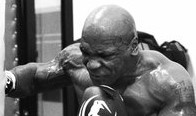Aqua training is basically running in water. It’s a great way for injured athletes to maintain conditioning, and for uninjured individuals to improve their fitness. Aqua training is a no impact sport, which means there is no bouncing and pounding and stressing your joints and bones. It is also a high resistance activity. Water offers much more resistance than air, and the resistance comes from all directions. This helps strengthen all muscles equally.
Most people who engage in aqua training are aerobic exercisers, and they are accustomed to the nutritional requirements of aerobic exercise—lots of complex carbs for energy and lots of water. Because aqua training is also a resistance exercise, you may need to boost your protein intake a little. This is especially true if you are healing from an injury.
Calories: Exercise burns calories, which is why we lose more weight when we exercise. If you skimp too much on the calories, you can’t exercise efficiently because you don’t have enough energy. This is especially true if you are also healing from an injury.
How many calories do you need? It depends on how much activity you do. To calculate your calorie needs, begin by multiplying your weight by 10; that’s how many calories you need to sit in a chair and think. Or sleep. Add another 50% of that number, and that’s how many calories you need every day to shower, fix breakfast, go to work, get the mail and all the normal activities of daily living.
If you are exercising, you need to add an additional 100 calories for every mile you run, bike, swim or aqua train in a week. You can spread these additional calories out over the week.
If you are trying to lose weight, you can decrease the number of calories you take in by no more than 20%. If you are losing more than a pound or two a week, you are not eating enough. You’re not losing just fat, either; when you lose weight rapidly you lose muscle mass along with the fat. Which is not a good thing.
Protein: Most Westerners get plenty of protein. According to the World Health Organization, people need 0.2-0.4 grams of protein per pound every day. The recommendation for aerobic runners is 0.5-0.75 grams per pound per day. That means that the “average” 140 pound runner needs around 75-100 grams of protein a day; a Quarter Pounder has 120 grams. Do, however, make sure you are getting enough protein if you are aqua training, especially if you are healing from an injury. You need the extra protein to build muscle and to repair the injury. Weight trainers aim for 0.6-0.8 grams per pound per day; that’s probably a good target for aqua trainers, too.
Water: Don’t forget your water. Just because you’re exercising in water doesn’t mean you can’t get dehydrated. You have the same water requirements as you would if you were running on land: 2 cups of water an hour before a work out and 1 cup every 30 minutes while you’re exercising. It’s hard to get too much water, but if you’re worried about it, use an electrolyte-balanced sport drink instead.
Aqua training allows you to maintain fitness while you heal from an injury, and it’s a good workout even if you aren’t injured. Eating enough calories, mostly from complex carbohydrates, getting enough protein and drinking enough water will ensure that you maintain your energy level and heal rapidly.







